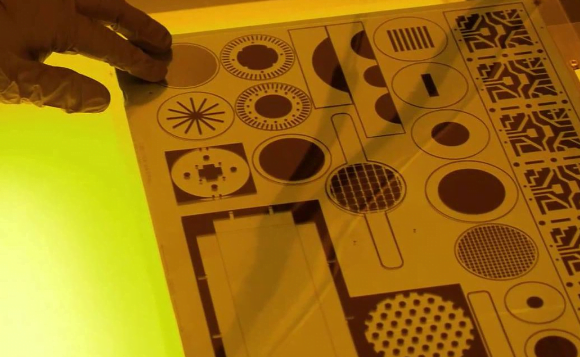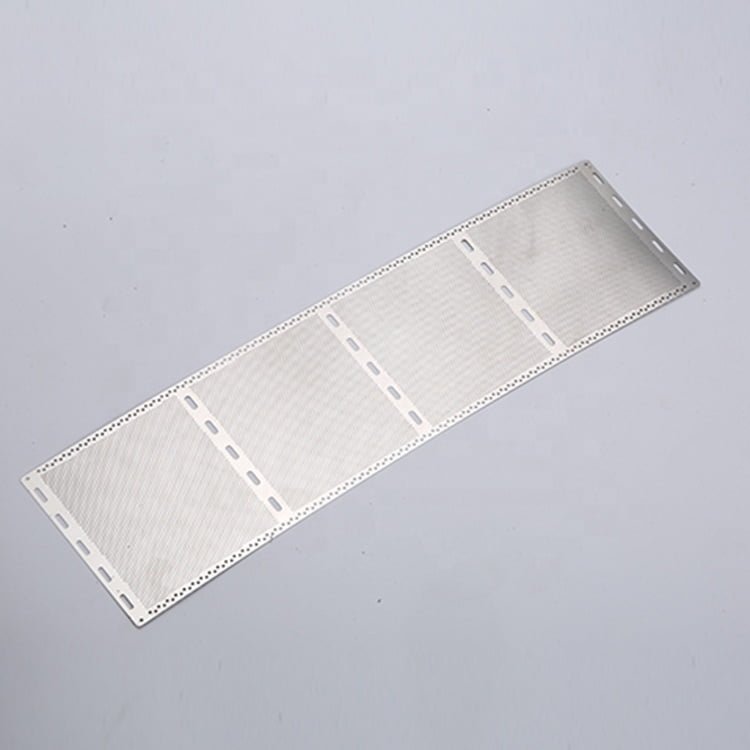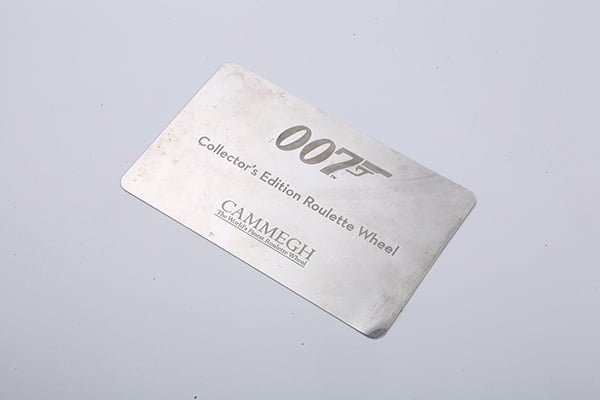Platinum, a rare and highly valued metal known for its exceptional durability, corrosion resistance, and electrical conductivity, plays a crucial role in various industries, including jewelry, electronics, and automotive.
Our Packages
- From 1000pcs
- Samples from 100pcs
- Approx. 30 days (may vary depending on the difficulty of the drawing)
View our Platinum etching production facility
Types of Platinum and Alloys: Advantages and Disadvantages in Wet Processing
Platinum exists in different forms and can be alloyed with other metals to enhance specific properties. Let’s explore the advantages and disadvantages of each alloy for wet processing:

- Pure Platinum: Pure platinum boasts exceptional durability and is well-suited for intricate jewelry and critical applications in chemical and electrical industries. However, its high cost and softness may pose challenges during certain wet processing methods.
- Platinum-Iridium (Pt-Ir): This alloy combines the robustness of platinum with the hardness and corrosion resistance of iridium. It is commonly used in medical devices and high-temperature applications. However, the high melting point of iridium demands precise process control during wet processing.
- Platinum-Ruthenium (Pt-Ru): The addition of ruthenium improves the catalytic properties of platinum, making it suitable for fuel cell applications. However, the increased complexity of the alloy may require specialized etching solutions during wet processing.
Metal Etching Platinum
Metal etching in the wet processing process involves using metal etching machines. The choice of etchant, such as Hydrofluoric Acid (HF), Ferric Chloride Etchant, or Cupric Chloride Etchant, impacts processing difficulty. Let’s explore key aspects of metal etching platinum:

- Etching Difficulty: Platinum’s reactivity with certain etchants poses challenges during the etching process. Hydrofluoric Acid (HF) is highly corrosive and requires careful handling to achieve precise etching. Ferric Chloride Etchant offers deep and well-defined patterns, while Cupric Chloride Etchant provides controlled etching and is commonly used in electronic applications.
- Precautions: Due to the corrosive nature of etchants, strict safety precautions are essential. Proper ventilation, personal protective equipment, and adherence to handling protocols prevent exposure to hazardous fumes and chemical burns.
Etching platinum can be challenging due to its high resistance to corrosion and reactivity with many chemical solutions. However, there are a few etchants that have been recommended for etching platinum. These etchants are often used in specific applications and may require careful handling and optimization. Some of the recommended etchants for etching platinum include:
- Aqua Regia: Aqua regia, a mixture of concentrated nitric acid and hydrochloric acid, is one of the few etchants capable of dissolving platinum. The process can be slow and requires caution due to the aggressive nature of the acid mixture.
- Potassium Iodide (KI) Etchant: Potassium iodide solutions have been used for etching platinum, particularly in applications like platinum wire bonding.
- Mixed Acid Solutions: Some mixtures of acids, such as a mixture of sulfuric acid (H2SO4) and hydrochloric acid (HCl), have been used for selective etching of platinum.
- Ruthenium Tetroxide (RuO4) Vapor Etching: Ruthenium tetroxide can be used as a vapor etchant for platinum to achieve high-resolution patterns in microfabrication.
- Sulfur-Based Etchants: Certain sulfur-based etchants have been proposed for selective platinum etching in semiconductor applications.
It’s important to note that etching platinum can be challenging, and the etching rates and selectivity can vary depending on the specific composition of the etchant and the platinum surface. Moreover, some of these etchants can be hazardous, and proper safety precautions should be followed when working with them. If you plan to etch platinum, it is crucial to conduct test etchings and seek expert advice to determine the most suitable etchant and conditions for your particular application.
Platinum etching equipment
Photo Etching Platinum
Photo etching, also known as chemical milling, offers precise and intricate patterns on platinum surfaces. The process involves using light-sensitive masks to protect specific areas while etching the exposed regions. Let’s explore key aspects of photo etching for platinum:

- Processing Difficulty: Photo etching demands exceptional accuracy and control. Applying and developing the photoresist carefully ensures accurate pattern transfer onto the platinum surface. Advanced photolithography techniques and skilled expertise are crucial for achieving desired precision.
- Precautions: Handling the photoresist requires a clean and controlled environment to prevent contamination. Adhering to processing times and temperatures during development ensures precise pattern transfer without overreaching or under etching.
Etching precision machined platinum materials necessitates a comprehensive understanding of the different types and alloys of platinum, along with the intricacies of electroforming, surface treatment, metal cleansing, and etching techniques. By selecting the most suitable processes and adhering to stringent precautions, manufacturers and engineers can fully leverage the unique properties of platinum, contributing to advancements in critical industries such as electronics, jewelry, aerospace, and medical devices.
View our metal etching products
how to etch Platinum?
Etching Platinum Process Guidelines
| Metal Alloy | Etchant | Etching Temperature (°C) | Etching Concentration (%) | Estimated Etching Depth (microns) | Etching Quality |
|---|---|---|---|---|---|
| Etching Platinum | Aqua Regia | Room temperature | 1:3 HNO3 to HCl | 2-15 | High-quality (smooth) |
| Etching Pure Platinum | Potassium Iodide (KI) | Room temperature | 10% KI | 2-15 | High-quality (smooth) |
| Etching Platinum-Iridium (Pt-Ir) | Mixed Acid Solutions | Room temperature | Varies | 2-15 | High-quality (smooth) |
| Etching Platinum-Ruthenium (Pt-Ru) | Ruthenium Tetroxide (RuO4) Vapor | Room temperature | Vapor | 2-15 | High-quality (smooth) |
| Etching Platinum-Ruthenium (Pt-Ru) | Sulfur-Based Etchant | Room temperature | Varies | 2-15 | High-quality (smooth) |
The values provided are approximate and can vary depending on specific etching conditions, including exposure time and the condition of the platinum or platinum alloy surface. Always conduct test etches and adjust parameters as needed to achieve your desired results. Additionally, safety precautions should be followed when handling these chemicals, especially in the case of Aqua Regia and Ruthenium Tetroxide vapor.
If you have metal wet etching Platinum needs, please feel free to contact us.
FAQs
What metals can you use to customize my goods?
- Wet Etching Germanium
- Wet Etching Gallium Nitride (GaN)
- Wet Etching Indium
- Wet Etching Cobalt
- Wet Etching Tungsten
- Wet Etching Stainless Steel
- Wet Etching Aluminum
- Wet Etching Kovar
- Wet Etching Copper
- Wet Etching Steel
- Wet Etching Nickel
- Wet Etching Platinum
- Wet Etching Silver
- Wet Etching Rhodium
- Wet Etching Hafnium
- Wet Etching Vanadium
- Wet Etching Zirconium
- Wet Etching Titanium
- Wet Etching Niobium
- Wet Etching Tantalum
- Wet Etching Molybdenum
- Wet Etching Brass
- Wet Etching Rhenium
How quickly can I get your response?
Within 24 hours.
Will you do 100% inspection before shipping out the orders?
Yes we do.
Can I have prototypes or samples before placing the order?
Samples are always available.
Etching Platinum Samples























